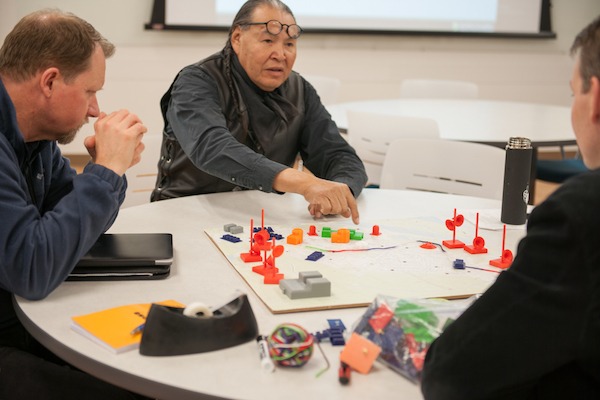Indigenous communities across North America are working to bridge the digital divide.
Each year the Indigenous Connectivity Summit (ICS) brings together community leaders, network operators, policymakers, and others to talk about new and emerging networks and the policies that impact them. During the two-day Summit, people from across the United States, Canada, and the rest of the world share best practices, challenges, and success stories – and learn how they can work together when they return home to solve connectivity challenges in Indigenous communities.
This year, we’ll be in Hilo, Hawaii from November 12-15.
But that’s not nearly enough time to cover everything, especially with close to 1,000 amazing participants (200 in-person and 700 online) ready to share their stories and create new connections.
So we’re trying something new. As we’ve done before, the ICS will still be split into two parts: a two-day training and a two-day event. Now participants can also attend a series of two distinct virtual training sessions before the event in Hawaii: Community Networks and Policy and Advocacy.
These sessions will allow participants to spend time over the course of several weeks getting in-depth information about two of the topics we spend the most time on at the Summit. They’ve been specially designed by experts in the field, most of whom have also participated in at least one ICS before. Their first-hand knowledge about what it’s really like to build, maintain, and operate a network and to advocate for policies that will reduce the barriers to connectivity that Indigenous communities face is invaluable.
The Policy and Advocacy Training is a six-week course that will include weekly webinars and curated resources on a variety of topics. It is intended for anyone interested in learning more about the ways in which existing policies can impact communities’ ability to get access to the Internet, and how they can make their voices heard and create change at a national level.
The Community Networks Training will have two parts. The first is a virtual, eight-week course via webinars (similar to the Policy and Advocacy course). Participants who complete the online portion of the course will have the opportunity to come to Pu’uhonua O Waimanalo, Hawaii after the ICS during November 14-15 for a two-day, hands-on technical training and launch of a community network. They’ll learn about the technical and soft skills – including funding, project management, and community engagement – necessary to build and run a network. They’ll also work closely with networking experts to learn best practices and create a new interpersonal network of networkers.
Each weekly course will be led by a different set of experts representing a variety of backgrounds: rural and urban, Indigenous and non-Indigenous, Canadian and American, etc. We hope these training sessions will help ICS attendees learn new, practical skills and that they’ll create an opportunity for deeper conversation for years to come. These new networks of training alumni will be ready to build and defend networks for themselves – and to teach their communities to do the same! (After the Summit, these trainings will be made publicly available so that alumni and their communities can continue to learn.)
Indigenous people have a right to high-speed, secure Internet on their own terms. When we meet in Hawaii for the 2019 Indigenous Connectivity Summit, alumni and other participants can build on these new skills, as well as their newly-formed networks of networkers, to help make that happen!

